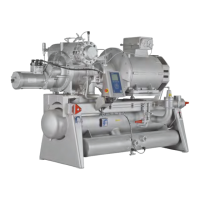Engineering manual - SAB 193-233-283 S A-frame (including ATEX)
150/175
008831 en 2022.02
Faultfinding instructions
12. Faultfinding instructions
In this chapter you will find:
• A list of common problems
• Suggested causes and recommended actions to solve the problem.
This chapter is primarily intended for service engineers.
Qualification requirements
Faultfinding requires competent and highly skilled personnel with extensive knowledge of the
system. The formal requirements include knowledge of refrigeration engineering and familiarity
with the actual system.
12.1 How to carry out faultfinding
Faultfinding is necessary in three general situations:
• When acute problems arise
To find out what caused the compressor unit to malfunction.
• Maintenance
During scheduled maintenance to detect operational deficiencies that may lead to fu-
ture disturbance or uneconomical operation.
• Start-up after repairs
For example, after replacement of a damaged component - to find external reasons
why a component failed.
Systematic faultfinding
Faultfinding should be carried out systematically. Experienced personnel with a thorough
knowledge of the unit often knows what the problem is and will find the error immediately.
If you do not have a thorough knowledge of the unit, consider the situation carefully. Do not
change any settings immediately; instead spend some time working out a systematic
approach.
Operating condition
Pressure and temperature variations in a refrigeration system can provide information about
the operating conditions of the refrigeration plant.
Particularly, the suction and condensing pressure as well as the temperatures of suction and
discharge gases may provide important information about the operating conditions of the
plant.
Considerable changes in the operating conditions can often be produced by even very small
changes in the variable pressure and temperatures.
The following troubleshooting chart shows the cause and remedy for any operating
disturbance.

